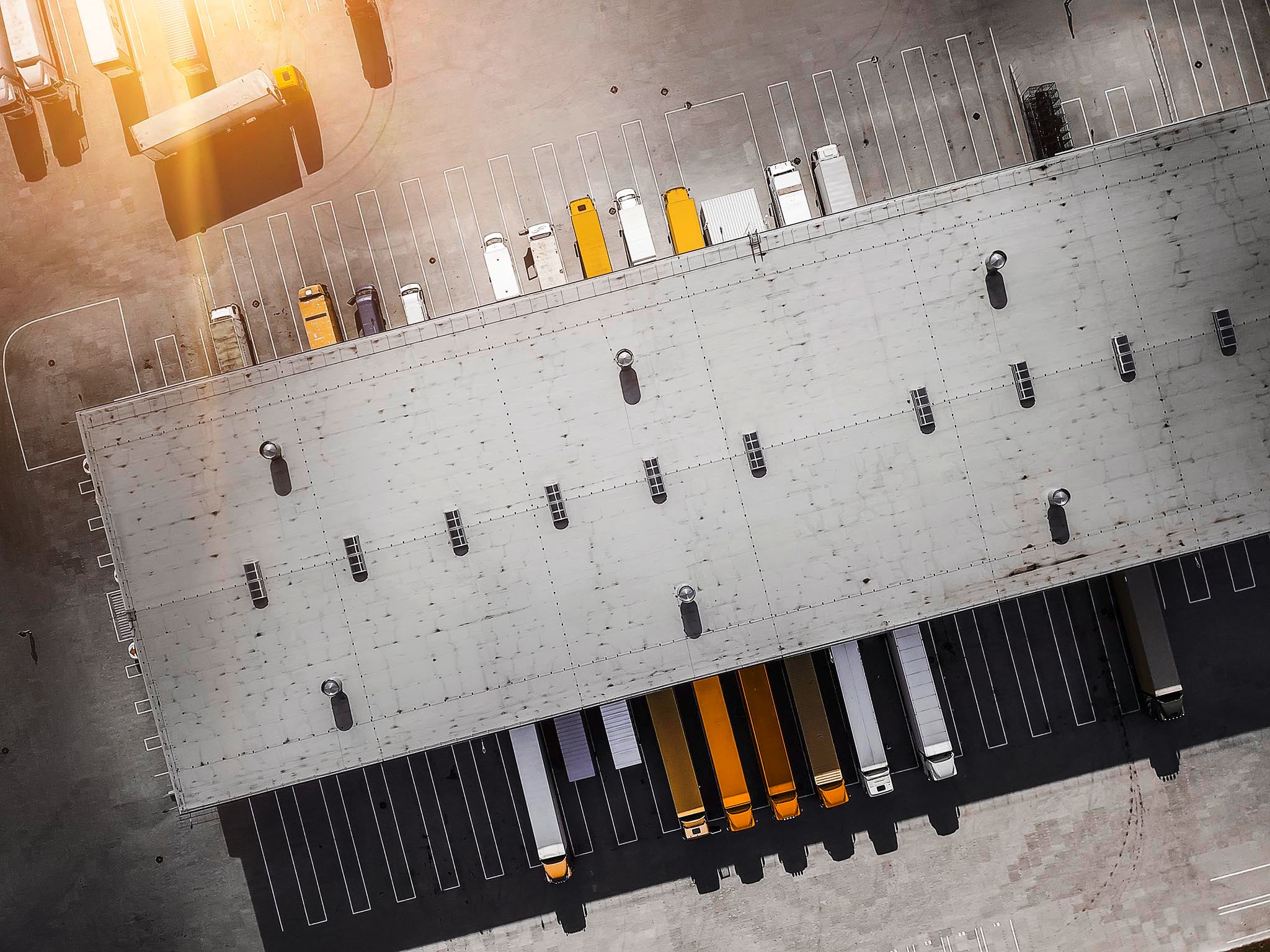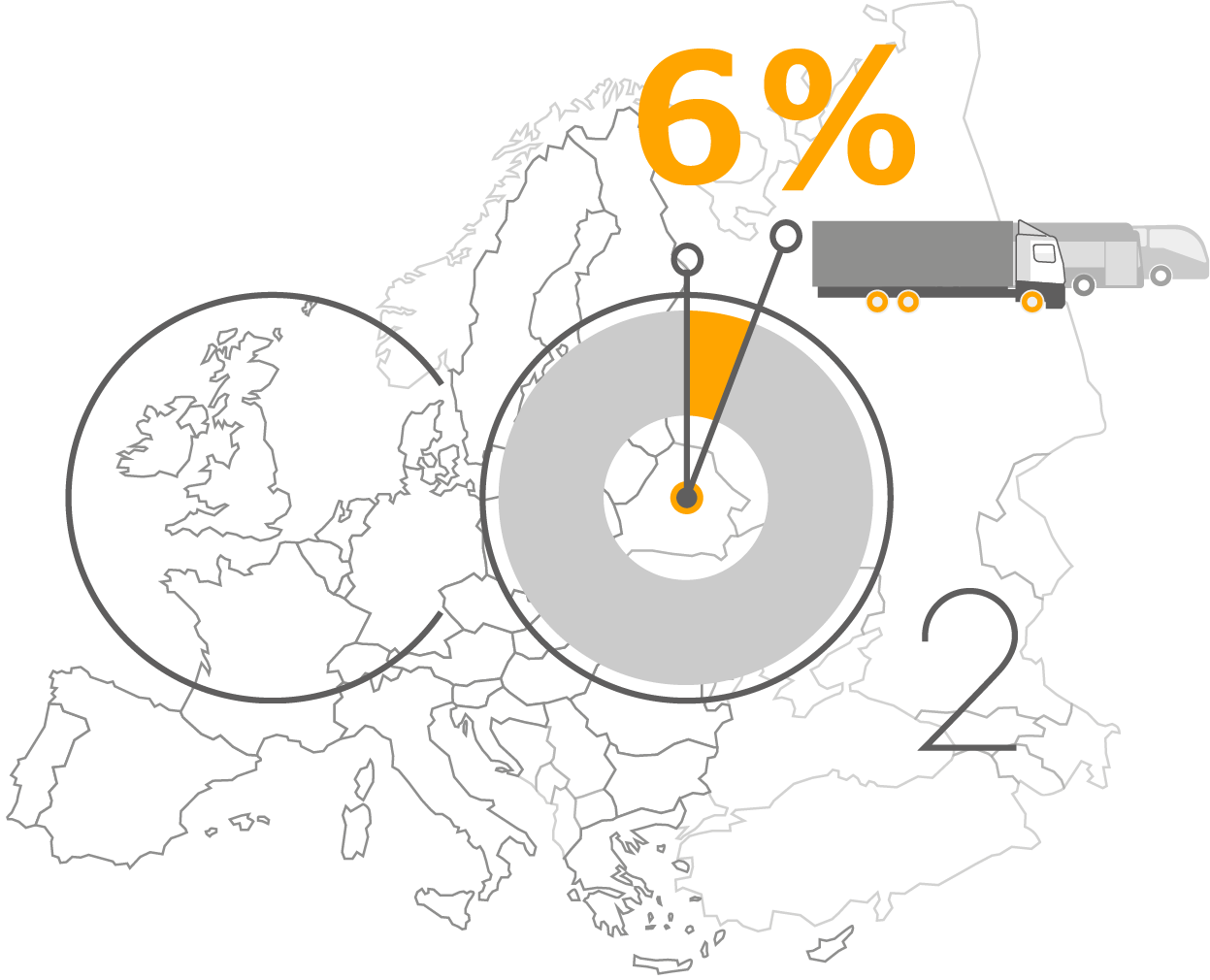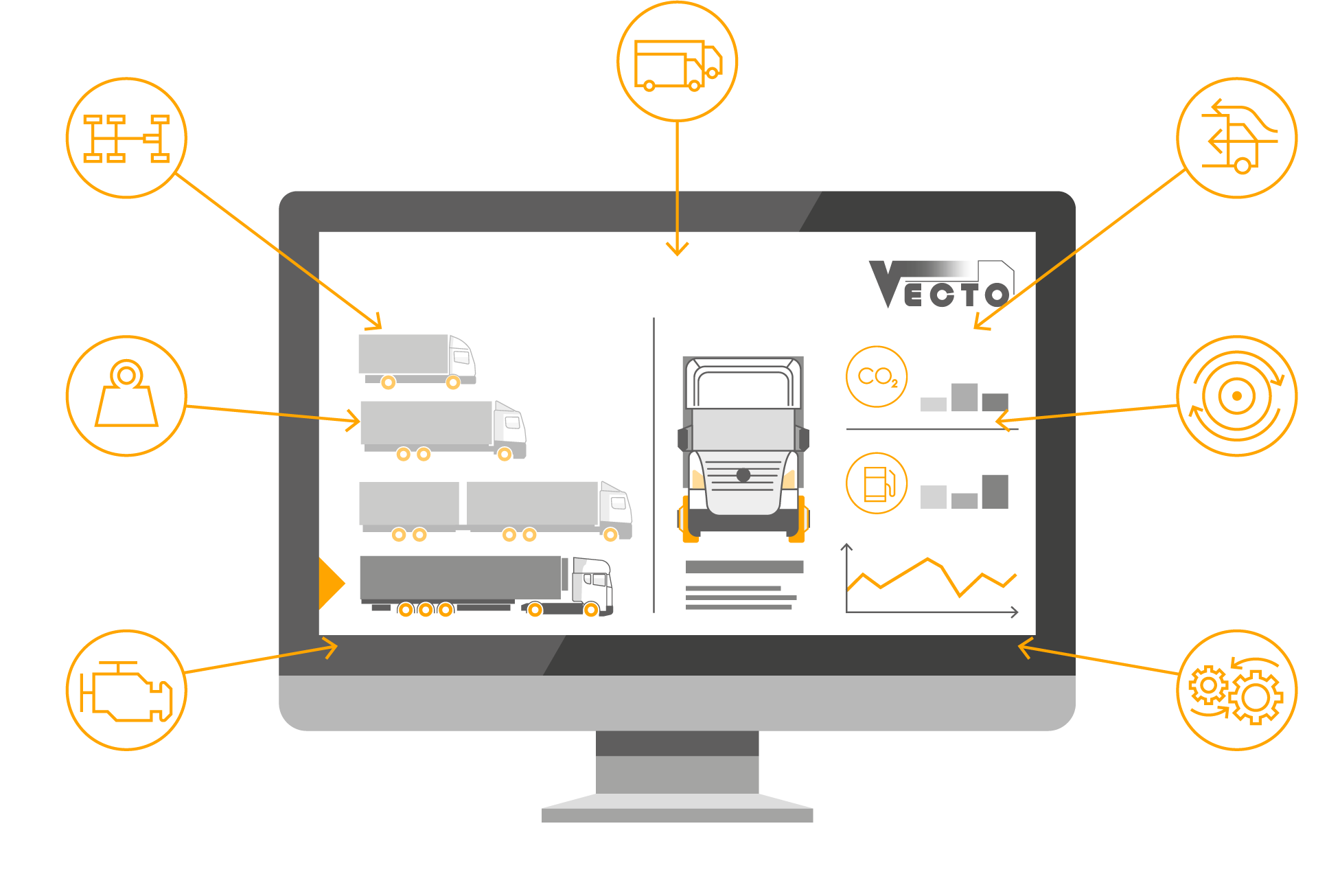# CO₂ Emissions & VECTO
More about CO₂ emissions & VECTO
All you need to know about the new heavy-duty vehicle CO₂ emissions regulations and VECTO.
What are the new CO₂ emissions regulations?
Europe’s first carbon dioxide (CO₂) regulation for heavy-duty vehicles has a very simple objective: radically reducing CO₂ emissions from trucks, buses and coaches.
To achieve this across the European Union, the European Parliament’s Regulation (EU) 2019/1242 came into effect on August 14, 2019. It’s designed to complement passenger car emissions standards and help the road transport industry to combat climate change in line with the Paris Agreement.
As the European Parliament explains: “It provides a clear pathway for CO₂ emissions reductions from the road transport sector and contributes to the binding target of at least a 40% domestic reduction in economy-wide greenhouse gas emissions by 2030 compared to 1990.”

Ambitious targets
To achieve its goal, the regulation demands that vehicle manufacturers (OEMs) set fleet-wide CO₂ emissions targets for their vehicles. By 2025, these will require a 15% reduction in average CO₂ emissions from heavy-duty vehicles compared with the 2019-20 baseline. By 2030, those emissions should have fallen by 30% compared with 2019-20.

Initially this only applied to trucks with a maximum gross vehicle weight of 16 tonnes or more, produced from January 2019 onwards. From January 2020, light delivery vehicles with a gross vehicle weight of 7.5 tonnes or more have been included too.
The regulation applies to a huge range of trucks - from two axles upwards and either rigid or articulated. Vehicles like these contribute 70% of the total CO₂ emissions from heavy-duty vehicles. By the end of 2022 the regulation will have been reviewed and probably extended to trailers, buses and coaches too.
The goal is simple. According to the European Parliament: “Such a stepwise approach (also) provides a clear and early signal for the industry to accelerate the market introduction of energy efficient technologies and zero- and low-emission heavy-duty vehicles.”
Those OEMs whose average emissions exceed the trajectory will be penalised with emissions debts.

Why are the new CO₂ emissions regulations important?
Our reliance on road transport sees trucks, buses and coaches generate 6% of all the European Union’s carbon emissions. They make up almost one quarter of total road transport carbon dioxide (CO₂) emissions.
And these emissions are on an upward trajectory. The demand for road transport – an industry known for its dependency on fossil fuels – is increasing. The European Parliament already claims that 25% of the EU’s CO₂ emissions from transport are generated by heavy-duty vehicles. According to the European Commission: “Without further action, the share of CO₂ emissions from heavy-duty vehicles is expected to grow by around 9% between 2010 and 2030.”
Despite these facts, until now, there has been no CO₂ emissions reduction requirement for heavy-duty vehicles. There undoubtedly needs to be as the European Parliament concluded in 2019: “In order to contribute to the objectives of the Paris Agreement, the transformation of the entire transport sector towards zero emissions needs to be accelerated.”
The Paris Agreement within the United Nations Framework Convention on Climate Change (UNFCCC) was signed in 2016. Its intention is to limit the average global temperature increase from pre-industrial levels to below 1.5°C.
Cutting emissions
To manage this, carbon dioxide emissions need to be cut back radically. If the EU is to achieve its 60% reduction from 1990 levels by 2050, focusing on heavy-duty vehicles is vital.
In addition to these environmental considerations, making heavy-duty vehicles more efficient has other benefits. Encouraging manufacturers to lower the CO₂ emissions of their new vehicles while developing new zero exhaust emission vehicles will improve the competitiveness of European vehicle manufacturers in the global market.
Additional benefits
The transparency the regulation brings will let haulage companies instantly compare offerings from different manufacturers. This will help them to make better-informed purchasing decisions. That in turn should reduce fuel bills which for most HDVs account for approximately one third (30%) of total operating costs.

What is VECTO and why did it come about?
Coming up with a regulation is the easy bit. Coming up with a means of enforcing it isn’t quite so straightforward. And that’s why VECTO has been years in the making. Short for Vehicle Energy Consumption Calculation Tool, VECTO is a computer-assisted simulation program. It’s been devised by the European Commission to employ a series of parameters to calculate a heavy-duty vehicle’s fuel consumption and therefore its carbon dioxide emissions.
Vehicle diversity
Before 2019, there was no way to accurately measure the exhaust emissions of trucks. The harmful emissions of their engines were assessed. But the engine of an articulated truck carrying bricks will use a lot more fuel and create far more emissions than the same engine pulling a trailer load of foam blocks.
If you can’t measure emissions, how do you enforce a regulation designed to cut them? The crux of the problem for legislators is that unlike cars, which on a very basic level are broadly similar and used in much the same way, trucks are all very different.
As the European Commission concluded, there are literally millions of types of heavy-duty vehicle. Two models might have the same engine but use a different gearbox and have a different axle configuration. They may have different tyres from one axle to the next. Some axles may feature single wheels, others twin wheels. And of course, they will be used for very different sorts of work.
Simulation
But as VECTO is a simulation tool, it can be adapted for specific trucks. That means it can simulate the CO₂ emissions and fuel consumption of any truck. By doing that, it’s possible to assess the overall level of emissions throughout the industry. And that makes it possible to create and enforce legislation.
The solution, researchers concluded, was model simulation. This enables the whole vehicle to be assessed, taking into account all its major components such as engine, transmission and tyres as well as how it’s used.
In the short-term, manufacturers can assess their vehicles before they’re sold and the details will be published to help buyers make a more informed decision.
How does VECTO really work?
The Vehicle Energy Consumption Calculation Tool – VECTO for short – is a computer simulation program. When this programme is fed with relevant heavy-duty vehicle data, plus information on how that truck is configured and used, it will run a simulation to calculate the vehicle’s fuel consumption and CO₂ emissions.
This enables the CO₂ outputs to be calculated more accurately for a far greater number of vehicles than by conducting a simple physical test.
Vehicle data that VECTO needs
- Vehicle category: Is it a rigid truck or a tractor unit?
- Axle configuration: How many axles does the vehicle have and what is the drive configuration? The more wheels that are powered, generally the greater the fuel consumption will be

- Weight: What is the vehicle’s maximum operating weight, including chassis, body, engine, fluids, fuel, driver and passenger, trailer and payload? What is its kerb weight ie. without driver, passenger or load?
- Tyres: What is their size and rolling resistance coefficient, etc.
- Engine characteristics: What is the engine’s capacity, its fuel map and the full load curve?
- Transmission: What kind of gearbox and final drive does the vehicle have? What are its gear ratios and what are the friction losses?
- Auxiliary equipment: What other equipment does the vehicle’s engine power, such as air-conditioning, steering pump, cooling fan and air compressor, and how much power do these take up?
How the vehicle is used
To result in an accurate benchmark, a selection of standardised and realistic parameters for routes and types of use are employed for the following:
- Driver behaviour: What’s the type of route? Long haul (few stops at constant speed), regional distribution (multiple stops, variable speed) or urban (multiple stops, low speed). And what are the braking, acceleration and speed profile characteristics and the gearshift strategy?
- Payload: How much weight is the vehicle carrying and where and how is this distributed?
- Vehicle configuration: If the vehicle is an articulated truck, what are the truck and trailer combinations it can be used with?
Why is this necessary?
To result in an accurate benchmark, a selection of standardised and realistic parameters for routes and types of use are employed for the following:
- Driver behaviour: What’s the type of route? Long haul (few stops at constant speed), regional distribution (multiple stops, variable speed) or urban (multiple stops, low speed). And what are the braking, acceleration and speed profile characteristics and the gearshift strategy?
- Payload: How much weight is the vehicle carrying and where and how is this distributed?
- Vehicle configuration: If the vehicle is an articulated truck, what are the truck and trailer combinations it can be used with?
